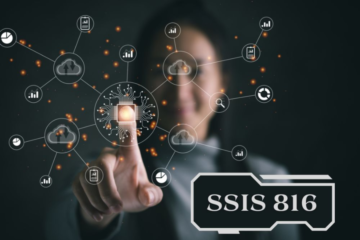Mobile app use has been increasing in tandem with the explosive rise in smartphone users throughout the last ten years. Communication, interaction, and business practices have all been fundamentally altered by applications. Even if mobile apps have made our lives simpler, many security issues remain unresolved. Cyber assaults may have many consequences for the company, from just obtaining illegal access to wiping all app data. It’s not a surprise; the majority of assaults these days have a financial motivation. Maintaining data integrity and privacy thus requires comprehensive security measures in the form of application security.
One of OWASP initiatives that focuses on mobile application security is MASVS (Mobile Application Security Verification Standard). The requirement for data protection has become even more evident since application security may be compromised for a number of reasons, including unsecured mobile devices and device theft. MASVS offers various applications exposed to a range of threat situations with a single security standard. The relevance of MASVS for mobile app security will be explained in this article.
- OWASP MASVS
A foundation for application security is provided by the open standard OWASP Mobile Application Security Verification Standard (MASVS). Its numerous verification levels are intended to guarantee the security of applications exposed to different degrees of risk. With consideration of the present threat environment, MASVS seeks to standardize the specifications for a wide variety of applications. The following goals are the reason MASVS was created:
To be applied as a measurement, MASVS’s security criteria provide app developers with a benchmark by which to measure their current creations.
Regarding usage as guidance: All stages of the creation and testing of a mobile app may be guided by developers and testers.
To be used in the procurement: MASVS offers a foundation for the security verification of mobile apps.
OWS MASVS categories
The comprehensive MASVS security requirements are divided into eight groups, numbered from V1 to V8.
- V1: Requirements for Architecture, Design and Threat Modeling
This section addresses the app’s architecture and design. Mobile apps acting as clients for remote services need to make sure that the same distant services are subject to the same security measures. Applications must have sufficient procedures to handle security issues from the time the app’s architecture is planned.
- V2. Privacy and Data Storage
This MASV category addresses the security verification standards for app protection of private information. Personally identifiable information (PII), including credit card and bank account numbers and medical records, is considered sensitive data. Additionally included are data protected by compliance and contractual information. These settings deal with everything from avoiding inadvertently disclosing private data to other programs to mistakenly leaking data to backups, cloud storage, and keyboard cache.
- V3: Verification of Cryptography
The security measures enumerated in this part are meant to provide app developers with best practices for using encryption. The emphasis of the chapter is on promoting utilized cryptography libraries, random number generators, and cryptographic primitive setups.
- V4: Requirements for Authentication and Session Management
A crucial component of the mobile app design is remote service login, and MASVS V4 outlines the fundamental needs for session and user account management. No access to the source code of the service endpoint is necessary for verification of these criteria.
- V5: Needs of Network Communication
The need to maintain the secrecy and integrity of data sent between distant service endpoints and mobile apps is emphasized in this chapter. For network communication, the mobile app must have an encrypted channel using the TLS protocol. For levels two and above, defence-in-depth techniques such as SSL pinning are advised.
- V6: Environmental Interaction Requirements
This part covers security requirements to be followed for inter-process communication along with standard components and platform APIs utilized by the application.
- V7: Code Quality and Build Setting Requirements
This part covers security controls that deal with security coding techniques to be used in application development. It also emphasizes the importance of turning on compiler security measures. This part covers everything from making sure the app is certified with a current certificate to stressing the importance of having an error handling code that automatically restricts access.
- V8: Resilience against Reverse Engineering Requirements
The implementation of sufficient security measures that impede hackers’ attempts to reverse engineer the program is covered in the final section. Reverse engineering poses varying degrees of danger. Hence, the safeguards listed in this section must be implemented after evaluating the security needs of the application concerned. The enhancement of application security is the aim of these measures. The lack of implementation of these controls prevents the application from being vulnerable.
Offering an industry standard, OWASP MASVS includes suggestions on security levels suitable for various threat situations. Security testers may benefit much from MASVS to guarantee test results are consistent. Reverse engineering resilience criteria and two security verification tiers are included in MASVS. Level 2 handles more complex security problems with tools like SSL pinning, among other things, whereas Level 1 guarantees defence against typical flaws. Applications dealing with very sensitive data should use Level 2 of MASVS. Standard security refers to Level 1, and defence-in-depth, which goes beyond the standards of Level 1 to Level 2.
Conversely, MASVS-R may be used in line with the threat model particular to the app. A set of criteria in it tackles client-side risks like tampering, modification, and reverse engineering. MASVS-R and MASVS level 1 or level 2 may be merged after risk factor assessment. Understanding which security verification levels may be applied to the application in focus requires risk assessment. Additionally, serving as a manual for automated unit and integration tests, and an alternative to off-the-shelf secure coding lists is MASVS.
Conclusion
A reputable supplier of mobile application security solutions for Android, iOS, and hybrid applications is Appealing. It provides strong, expandable security for applications without any coding capabilities. Our technologies safeguard applications across sectors from gaming and entertainment to finance and e-commerce against known and unexpected threats. Contact them immediately for runtime app security that includes code protection, real-time monitoring, threat analytics on attack vectors, and easy integration with third-party technologies without compromising app performance.
Keep an eye for more latest news & updates on Gossips!




